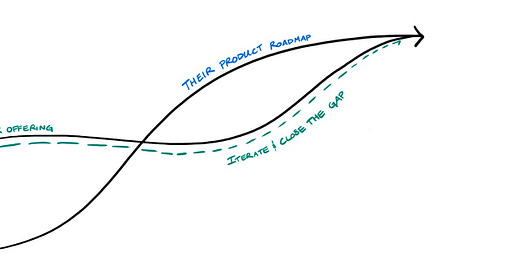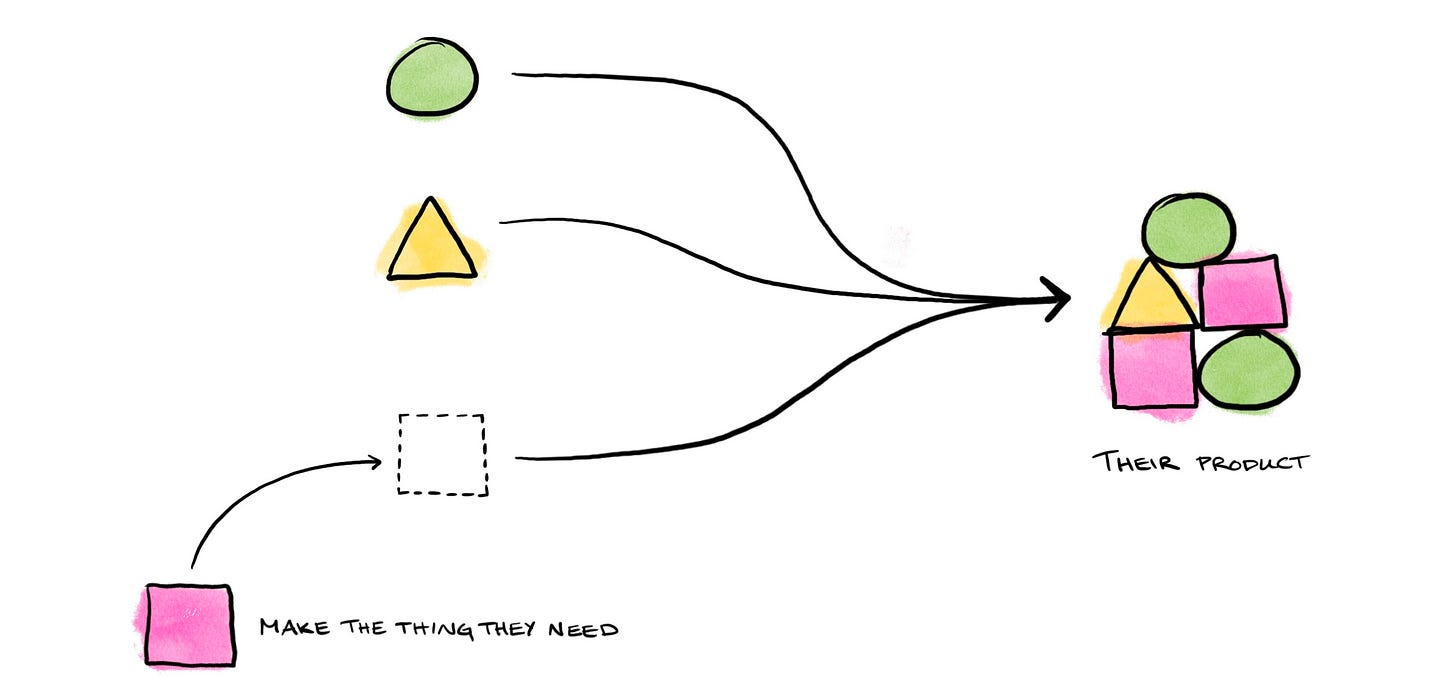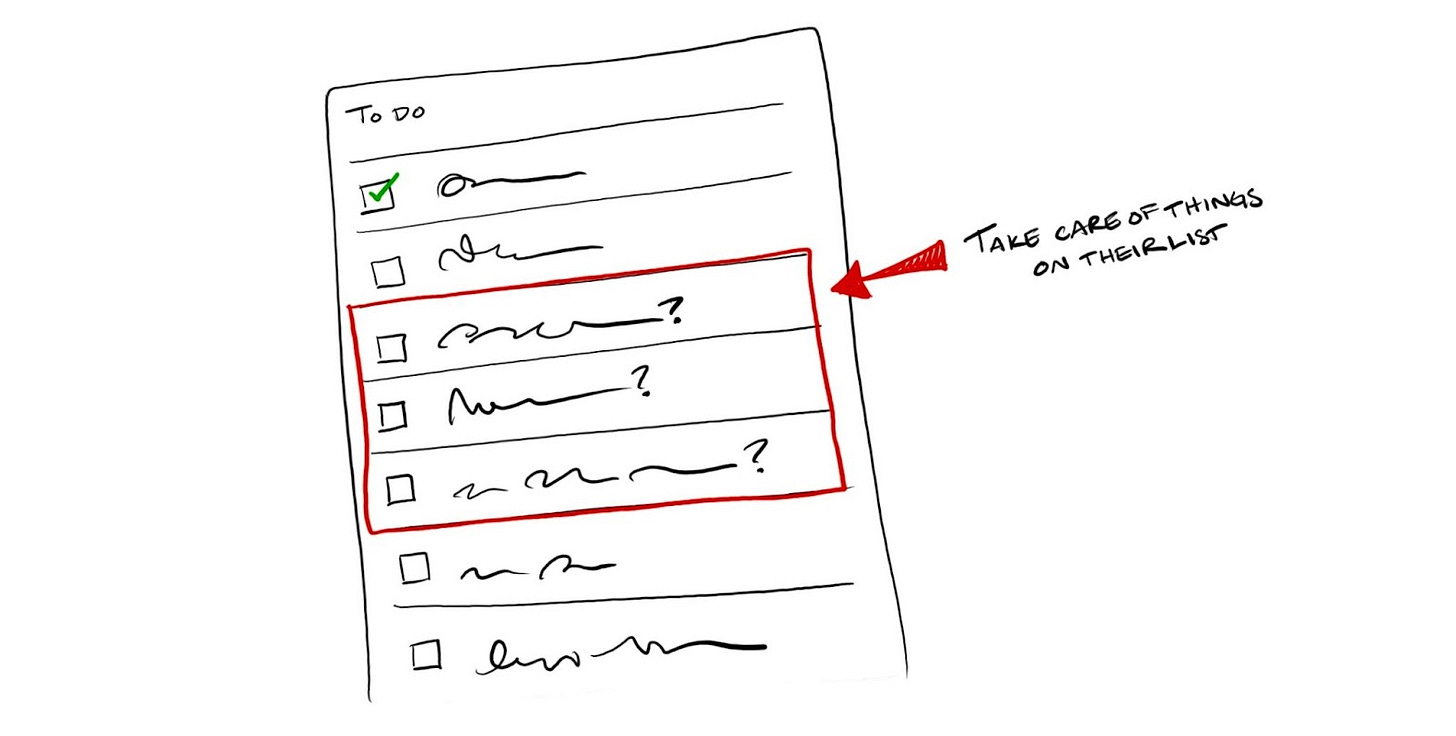Be in their critical path
Driving adoption of your work means aligning that work with others' goals, making your solutions essential to their success and accelerating their progress.
Understanding what's critical
One of the most effective ways to drive adoption of a design system (or, let's be honest, anything really) is to position it directly in someone else’s critical path. I don’t mean get in their way. Rather: be the solution to things they need to accomplish. This is about making your work indispensable, not just a nice-to-have. It means digging into what another team is genuinely trying to achieve, and then demonstrating how your work accelerates their success.
In a time of constrained resources and an ever-present need to increase efficiency, most teams are drowning in priorities: tight OKRs, aggressive launch goals, and competing opportunities that probably keep them up at night. If the thing you’re creating isn't directly helping them meet those specific, urgent goals, then no matter how beautiful or well-made your product is, it's not going to make it onto their roadmap.
Often, when a team pushes back on adopting a solution, it’s not because they don’t like what you’re making. It’s because they don’t see how it helps them solve their most urgent problems. The real magic happens when you dedicate the time to truly understand their pain points:
What are they absolutely on the hook to deliver?
What’s tangibly slowing them down?
What is their leadership focused on, strategically?
What does that tell you about their biggest bets and risks?
Only then can you begin to frame your work as a strategic tool that not only clears those obstacles but actively accelerates the team’s work. That’s what it means to be in the critical path: you become essential, a clear problem-solver, and an inarguable value-add.
Design systems in the critical path
This approach is especially critical when it comes to design systems. Designers and engineers are pragmatic: they'll reach for solutions that help them move faster, with greater confidence. If your system genuinely saves them from having to do work they’d need to do anyway (e.g. avoiding QA bugs, ensuring accessibility standards are met by default, or providing research backing up UI patterns) you've just handed them a strategic shortcut.
But the reality is: it's not a magic wand, and even the most promising solutions require upfront costs around learning new patterns, migrating existing code, and integrating new tooling. These are things that can easily deter would-be adopters.
Here's how you tackle that head-on:
Quantify the pain and gains: Don't just tell people your system saves time – show it. Work with a team that’s struggling with a tangible issue, like accessibility. Build a prototype that proves your components can take care of a measurable amount of the work. Quantify the hours saved and bugs resolved (and don’t forget to solicit some testimonials along the way!).
Ease the migration path: Part of being in the critical path is reducing their friction. If you have the means, offer direct migration support. Provide tools that help with adherence. Build clear step-by-step guides. Create robust support channels so that the teams adopting know they can always reach out. Make the transition feel well-crafted, and as minimally-frictive as possible.
Start with something small (but meaningful): Don't ask them adopt the entire system or product on day one. Again, find one genuinely painful problem you can help solve immediately and demonstrably. Help them solve that, build trust, and then expand.
Going from evangelist to strategic partner
The strategic shift here is subtle but powerful: don't focus on getting people excited about your roadmap. While your system needs its own compelling vision, your primary focus should be on understanding their roadmap. Get deeply, genuinely curious about their OKRs.
What does success look like for them this quarter?
What are their investments, in terms of resources / time / money?
What's standing in their way?
How can your work slot in and remove that friction, accelerate their progress, and make their lives easier?
This isn't about becoming a service org that bases its work only on customer requests. It’s about proactive empathy and strategic alignment. It means actively seeking out OKR documentation, attending annual planning sessions (if you can finagle an invite), and having 1:1 conversations to uncover honest pain points that might not be making it into documentation. When you connect your product to solving those pain points, you're not just accelerating their work — you’re forming a trust-based relationship that cements you as a reliable partner, because you’re on their side. And this makes it way simpler for them to say “yes” to you.
Leveling it up: proving cross-org impact
As a bonus, when you strategically align your work to the other team’s critical goals, you also immeasurably strengthen your position with their leadership (and yours!). It’s no longer just about shipping features or evangelizing tools—it’s about driving outcomes that matter across the entire organization.
But this kind of impact needs to be proven, not just claimed. Some things you can do to demonstrate impact:
Aggregate the wins: Don't just keep an eye on individual team successes — collect them.
"Team Alpha saved X hours on migrations."
"Team Beta reduced Y bugs by using our components."
"Team Gamma accelerated their launch by N weeks."
Tie to top-line metrics: Connect those aggregated wins to company-level OKRs and key business metrics (e.g. faster time-to-market for products, improved customer satisfaction scores, reduced development costs). Show how the work supported larger goals for the business.
Craft the narrative: Translate the data into compelling stories for executive leadership. Show how the thing you’re making is helping teams build better products, faster, and driving company-level success. By doing this you’ll go from "building a thing" to pushing on foundational, cross-org, company-level successes. Again, it’s about making your product indispensable rather than a “nice to have.”
Relevance as your force multiplier
Relevance to other teams’ challenges is your ultimate force multiplier. When people understand how your work will help them actually succeed, they’re more naturally inclined to align with you. When they see that what you’re making is a clear win that’s worth the cost, convincing them becomes less of a battle and more of a forgone conclusion.
Don’t get it twisted – it’s improbable that you’ll ever be in a situation where you’re never needing to convince anyone. Adoption in complex orgs is never truly effortless. There will always be inertia, legacy systems, political currents, and competing priorities causing friction.
The difference is, when you consistently show up with the thing that helps teams move faster and more efficiently toward goals they already care about, the conversation shifts. You're no longer asking for adoption – you're addressing a clear need that makes adoption the right choice. You're proving concrete value. And that, even with the inevitable friction of everything that comes with the process, makes all the difference in achieving impactful adoption.





